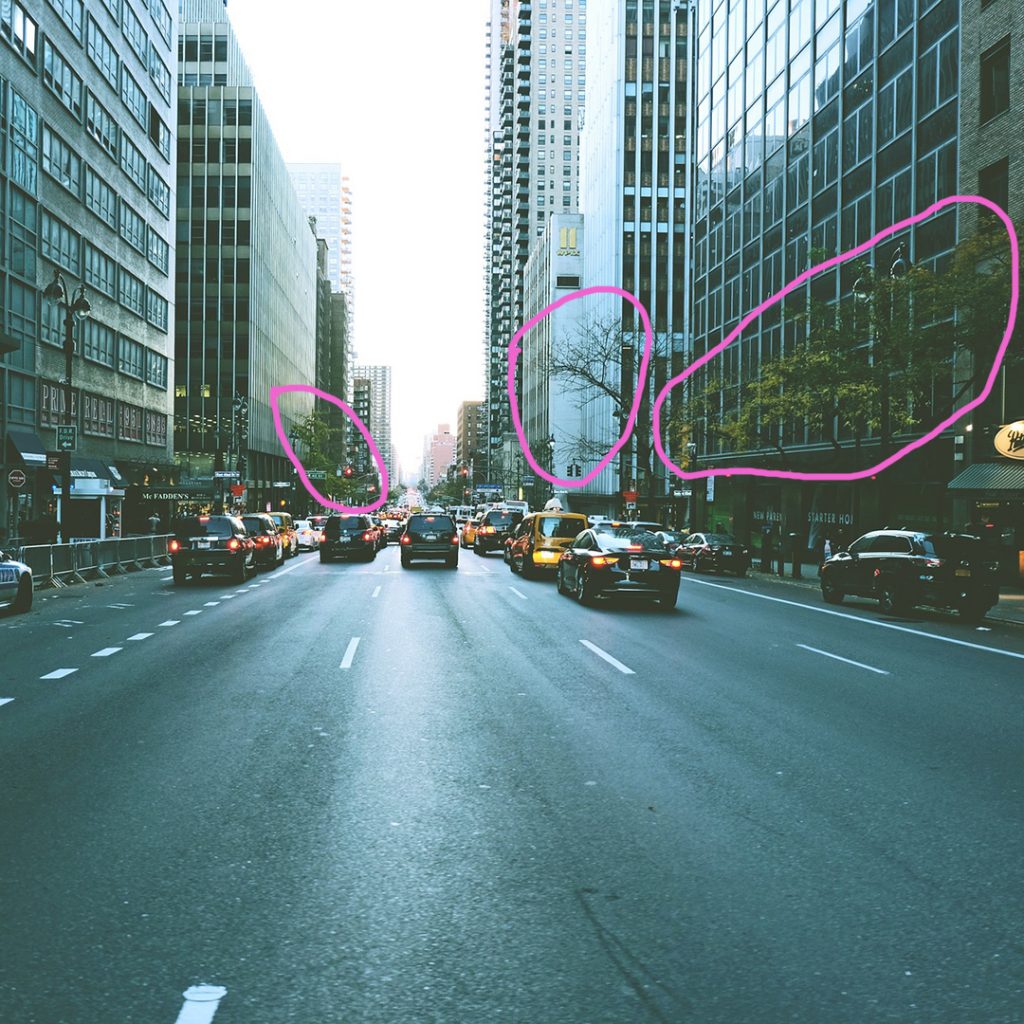Do you usually notice trees and other plants when walking on a city street? What is the name of the tree? Why have they chosen to plant this particular tree right here? Most of us rush past different trees, shrubs, and flowers daily without noticing them. And if they were to disappear, would we see that they were gone?

“PLANT BLINDNESS” IS AN INTERESTING CONDITION THAT MANY MODERN PEOPLE SUFFER FROM.
The term was coined in the United States more than 20 years ago and meant “the inability to see or notice the plants in one’s environment” [1)]. Plant blindness is a tendency for people to not notice or care about the plants around them and to undervalue their importance in the environment. Plant blindness can negatively affect conservation and the use of plant resources. More and more people live in big cities and have limited contact with nature.
In recent years, nature-based travel has increased popularity as more people seek outdoor experiences like hiking, camping, and wildlife watching. The COVID-19 pandemic has further accelerated this trend as people seek safe and socially distanced activities. Moreover, the growing recognition of the mental and physical health benefits of spending time in nature has also contributed to the rise of nature-based travel. (2).
WITH LESS EXPOSURE TO PLANTS, SPECIES KNOWLEDGE DECREASES
Researchers say we overlook individual plant species and only see “something green” because we lack specific knowledge. For example, an English study demonstrated that London students, academics, and biology teachers could barely recognize ten common English wildflowers [3]. As the inventor of the term “plant blindness” (1) puts it, we can only visually attend to what we already know. Consequently, plants are often reduced to a green backdrop in our lives, and we may fail to see individual plants or trees for all the forest, like the well-known saying “not seeing the forest for the trees?”
If we do not notice that species are disappearing, then how should we be able to engage in counteracting the loss?
KNOWING THE NAME OF A PARTICULAR TREE CAN INCREASE OUR ABILITY TO SEE ITS VALUE AND DESIRE TO PRESERVE IT, ULTIMATELY IMPACTING HOW WE PERCEIVE AND VALUE NATURE.
According to the botanists who coined the term “Plant Blindness”, James Wandersee and Elisabeth Schussler, our inability to pay attention to plants is because plants lack many of the visual signals that animals have. Plants have no face or eyes and do not move like animals, which makes it more difficult for us to relate to plants than animals.
If a flower whose name we do not know ceases to exist suddenly, there is a significant risk that we will not miss it. Plant blindness can thus lead to a reduced interest in the conservation of biological diversity and to us underestimating the importance of plants [1]. Another consequence is that we find it difficult to talk about the nature around us when we do not have words for what we see.

The declining interest in botany is also evident in universities. Globally, there needs to be more education about the subject. Fewer and fewer are studying botany [4]. In the United States, it is becoming increasingly common for high schools and universities to close their botany courses due to a lack of government research funding and sometimes a lack of interest. As many botanists in the United States are approaching retirement age, there will be a significant shortage of botanists soon [5].
With specialized knowledge of the functions of plants and the importance of diversity, we will find it easier to secure the future food supply, develop new medicines, and cope with the climate crisis. Plants give us everything from oxygen and food to clothes and drugs. For example, traditional and modern medicine use around 50,000 – 70,000 plant species [6].
The forest’s “floor” is covered by different species. Do we see the species or just “something green?”
WHAT CAN YOU DO?
- Next time you walk past a tree on the street, stop and look closely. What might the tree be called? Is it an implanted tree or a tree that grows naturally in the environment? Once you have noticed a tree, you are guaranteed to open your eyes to more trees around you!
- A fun way to get a better idea of plants can be to learn more about which wild plants are edible. There are several books and websites about wild edible plants on Earth. Looking for specific plants also means we zoom in more on the vegetation in our surroundings and draw attention to many species that we otherwise would have just passed by.
Sources
- Carnegie Museum of Natural History – Plant Blindness

- Cbi.eu – Minister of Foreign Affairs – Nature Tourism

- U.S. Department of Agriculture – “Plant blindness” is lack of botanical awareness

- Science Daily – neglecting the importance of plants

- National Library of Medicine – The botanical education extinction and the fall of plant awareness

- UN Environmental Program – Safer use of chemicals can help protect biodiversity




